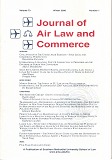FAQ #26: If we really went to the Moon in 1969, why aren't we there now?
The biggest single block preventing a return to the Moon, this time to stay, is the absence of safe, reliable affordable human transport capable of going back and forth multiple times.
And that absence has persisted for decades because no one, public or private, has sufficient motivation to invest scores of billions of dollars to develop that affordable transport.
In the 1960's the motivation for the Apollo program was the Cold War need to prove to the world that the American system could catch up to what the Soviets had achieved, and pass them.
Kennedy committed us to "landing a man on the moon and returning him safely to the earth", "before this decade is out."
"A man"!
JFK didn't say anything about setting up a base there, or developing the ability to keep going back, because he had no interest in doing that. Just that one-shot effort to show we could land "a man" was tough enough - and expensive enough.
So NASA rushed the "down and dirty" Apollo & Saturn 5 system which threw everything away as it went, leaving them to start all over for each incredibly expensive flight. Sustainability would have cost even more to develop, and, worse, delayed the first landing, so they deliberately ignored sustainability.
Of course the space people in NASA, like Wernher von Braun, desperately wanted to go on and develop the kind of transport system that would allow a permanent base on the Moon, with ships gong back and forth regularly.
But the political leaders and budget makers who had to answer to the people demanding lower taxes, found they couldn't justify the expense - especially once they had the 1967 Outer Space Treaty to make sure, if they stopped, the other side wouldn't go and claim the Moon.
And in the end, they even cancelled 3 of the 8 Moon missions that had been in the pipeline to provide backups in case the first attempt had failed.
And there we've been stuck for thirty or forty years - with no break in sight!
Space enthusiasts keep on trying to get the government to do it, but are always out voted by the taxpayers saying, "Space is neat, but I've got better things to do with my money than pay taxes for space development."
And all that time, a simple regulatory change could have gotten private venture capitalists to pay to develop the transport and open the space frontier, but, without that change, they, too, have no motivation sufficient to justify the huge cost and risk.
So, we went to the Moon once upon a time, but now we can't. Perhaps not ever again.
Lunar Reconnaisance Orbiter (LRO) images offer sharper views |
Questions & Answers about Lunar Land Claims Recognition
Note: The first 25 FAQs below are reprinted from the Space Settlement Initiative ![]() website.
website.
What is the real purpose of enacting a Lunar land claims recognition law?
What does international law say about private property ownership in space?
Can there be property ownership without national sovereignty?
What if other nations refuse to recognize land claims in space?
Why not allow smaller, limited land claims for easier steps than settlement?
Could lunar land really be worth enough money to make a difference?
What conditions should the US set for recognition of a claim?
How much land should a settlement be able to claim... and why?
Are the weaknesses and compromises in this plan likely to be permanent?
Could other sources of revenue be enough without land claims recognition?
What effect would this have on NASA and the aerospace companies?
More FAQs
The FAQs above cover basic questions about Lunar Land Claims Recognition. The following questions address more advanced issues.
If we really went to the Moon in 1969, why aren't we there now?
What were the assumptions before the Outer Space Treaty, (e.g. Robert Heinlein)?
Will changing how NASA works bring the taxpayers back on board?
Could this law force the US to recognize a foreign government's Lunar land claim?
Would Article VI of the Outer Space Treaty prohibit Lunar land claims recognition?
| Back from If we really went to the Moon...? to Frequently Asked Questions (FAQs) Back from If we really went to the Moon...? to the Space Settlement Institute home page |




